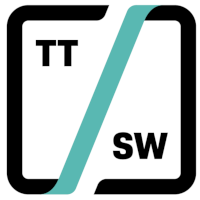EchoVis is a research and development project aimed at supporting the learning of echolocation – the ability to orient oneself in space using reflected sound waves. The primary target group is visually impaired individuals, for whom echolocation can provide real support in everyday life.
However, to teach it in a controlled and safe manner, we had to develop a series of mobile solutions and implement them in a game for iOS and Android. The challenge was that the app lacked a typical graphical user interface, yet it still had to meet WCAG requirements – digital accessibility standards, including those for the blind.
Research
One of the first stages of the work was to analyze possible forms of communication between the user and the app. We focused on which interaction mechanisms are most natural for blind people. The research aimed to prepare the groundwork for selecting libraries, frameworks, and designing an appropriate UX/UI.
To gather specific data and feedback, we created a test app called UITester, designed for both iOS and Android. UITester allowed for the presentation of user interface elements in various user interface variants. The goal of this experiment was to select the most convenient and intuitive variants.
The test involved testers being given a specific interface element to test – such as a button, a switch, an option selection, or a screen switch – in several user interface variants. After completing each test, they were asked to rate their comfort and indicate their preferred version of the element. This allowed us to gather feedback, which informed the selection of tools and the design of our future products.
Tool Selection
Based on the research results, we moved on to the next stage – technology selection. Classic mobile native solutions offer extensive accessibility support (e.g., VoiceOver on iOS, TalkBack on Android). However, we needed greater flexibility, allowing for the integration of additional sound libraries and expanded control over the 3D environment. This led us to choose the UnityEngine game engine, which also offers excellent cross-platform support.
Unity allows for publishing applications on multiple platforms, which is a huge advantage. Unfortunately, it doesn’t support native accessibility solutions by default. In practice, this means that no system screen readers can read UI elements created in Unity. To solve this problem, we used the User Accessibility Plugin (UAP), which allows for full control of the application using screen gestures. Importantly, the plugin could be freely modified in C#, giving us the ability to implement unique features, such as support for new gestures for interacting with UI elements.
EchoVis Quiz
The first commercial step was EchoVis Quiz – a quiz app in which users answered questions and earned points. It was a form of gamification and introductory learning, maintained in a lightweight “challenge” format.
The application was essentially based on the code of AudioTester – a previous research tool that tested user reactions (both sighted and blind) to real-world audio. Therefore, there was no need to implement this game in the UnityEngine yet.
Echovis – Learning Echolocation
The next development step was the creation of the first educational game – EchoVis Street. The player is tasked with navigating a virtual, crowded street, relying solely on their hearing. The game was built in Unity and posed a challenge not only from a design perspective but also from a technological perspective – we had to separate the functionality of navigating the interface from the gameplay itself. This required a thorough modification of the UAP plugin to meet the needs of both accessibility and interactive 3D gameplay.
The next product was EchoVis Game – a mobile game in which the user must navigate from one point to another, avoiding various obstacles. Navigation is based on the use of sound phenomena: sound reflection, directionality, intensity, and pitch. The player must learn to interpret audio signals in a way that allows them to build a “mental map” of their surroundings. This was a true test of Unity’s capabilities, the libraries used, and our approach to UX without a graphical user interface.
Summary
The EchoVis project demonstrated that it was possible to create an application fully compliant with accessibility principles despite the lack of a traditional graphical interface. The key was a combination of user research, appropriate technology selection, and technical skills that allowed for flexible tool customization. Collaboration with the blind community allowed us to gain a deeper understanding of their needs, and utilizing the Unity engine allowed us to create applications that were accessible, scalable, and innovative. This proves that accessibility doesn’t have to be a limitation—it can be the impetus for creating something entirely new.
